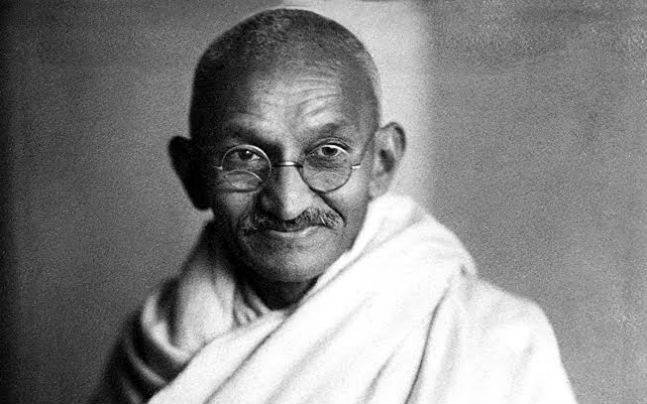
|
Getting your Trinity Audio player ready...
|
Gandhi-haters are still there, though Gandhi wouldn’t mind it. “If I had no sense of humour,” he wrote in 1928, “I would long ago have committed suicide”. Gandhi used to say that, “Nobody can hurt me without my permission.”
What is common between Dominique Pire, a Belgian priest, Adolfo Perez Esquivel, a teacher in Argentina, Martin Luther King Jr and Nelson Mandela? The immediate answer would be that all four were recipients of the Nobel Peace Prize. Also common to all four is the fact that they were all followers of Gandhism, the philosophy of Mahatma Gandhi — Gandhi was one Asian leader in the last century who wielded such a powerful influence and had such an impact across nations and continents. His ahimsa and satyagraha — non-violence and truthful resistance — were the only original political programmes offered by any leader from the southern hemisphere in the last two centuries.
Gandhi was a phenomenon; a phenomenon that wouldn’t perish. A hundred and fifty years after his birth and 71 years after death, he continues to stir the imagination of generations across the world. He was a great irritant to many in his lifetime, but he was and continues to be an inspiration to millions more. Whether you hate him or love him, you have to surrender before him. Winston Churchill loathed Gandhi: “It is alarming and also nauseating to see Mr Gandhi, a seditious middle temple lawyer, now posing as a fakir of a type well known in the east, striding half-naked up the steps of the viceregal palace, to parley on equal terms with the representative of the king-emperor”, he had bristled. But there Gandhi was, in his “half-naked” attire. When somebody later asked him if it was not improper to go in that attire, Gandhi’s reply was “the king had enough dress for both of us”.
Even Nathuram Godse, who killed Gandhi, had to admit, “I am prepared to concede that Gandhiji did undergo sufferings for the sake of the nation. He did bring about an awakening in the minds of the people. He also did nothing for personal gain… I shall bow in respect to the services done by Gandhiji to the country, and to Gandhiji himself for the said service”.
Gandhi-haters are still there, though Gandhi wouldn’t mind it. “If I had no sense of humour,” he wrote in 1928, “I would long ago have committed suicide”. Gandhi used to say that, “Nobody can hurt me without my permission.”
Gandhi inspired many to dedicate their lives in silent service. Renowned among those true Gandhians were Thakkar Bapa, who worked selflessly for many years among the so-called untouchables and tribals, and Vinoba Bhave, who championed the cause of the landless. Men and women continue to toil among the underprivileged masses in far-flung areas even today, away from the glare of the floodlights, inspired by the zeal of Gandhi.
But as far as Gandhians are concerned, there are far too many. For some, it is a façade more than faith. For others, it is a tactic. Not just today, even when Gandhi was alive, there were several types of Gandhians. Jawaharlal Nehru, one of the leading lights of Gandhism, was hardly a believer in it. Eminent journalist Frank Moraes wrote that one day he wanted to meet Nehru. “Come and see me during Gandhiji’s prayer meeting. I’m never there!”, Nehru told Moraes. For Nehru, Gandhism was just a political compulsion and tactic.
Gandhism doesn’t lie in spinning the charkha or wearing khadi alone. “If Gandhism means simply mechanically turning the spinning wheel, it deserves to be destroyed,” Gandhi had declared bluntly. Gandhi didn’t merely preach, he lived by his words. It was his life that had inspired the masses, while leaders and intellectuals continued to juggle with his words and statements. Gandhism is not any creed or sect — Gandhi never wanted it to be that way. Gandhism is to be lived, not lectured.
Gandhism is about truth, non-violence, transparency, openness to criticism, fearlessness, rejection of image consciousness and political correctness. Gandhi’s life was an open book. He was not someone from the outside and someone else from within. And he was truly a man of the masses. He lived among the people and spoke for them. He insisted that people should strictly follow certain norms and morals in life. But he was also, always, open to those who disagreed with him. He never believed in tit for tat. “An eye for an eye would make the whole world blind” was his famous quote. It is something that is often repeated but hardly followed by the political class.
Gandhi’s life was an example in humility and boldness. “I have nothing new to teach the world. Truth and non-violence are as old as the hills. All I have done is to try experiments in both on as vast a scale as I could,” he used to say. He never believed in his infallibility. Deification of Gandhi was a strict no-no for him. Gandhi had the supreme courage to own and correct his mistakes.
We invoke Gandhi aphoristically. We tend to use this invocation either to glorify ourselves or to vilify others. It is a big question as to whether the real Gandhi was ever understood by us. To understand Gandhi, we have to enter his mindscape. Gandhi introduced into our social consciousness a set of values like truthfulness, non-violence, and a courage of conviction that was absent in the public life of his time. Upholding these ideals is Gandhism.
“They might kill me, but they cannot kill Gandhism. If truth can be killed, Gandhism can be killed”, is Gandhi’s life-lesson for the world.
(The article was originally published in Indian Express on October 2, 2019. Views expressed are personal)



